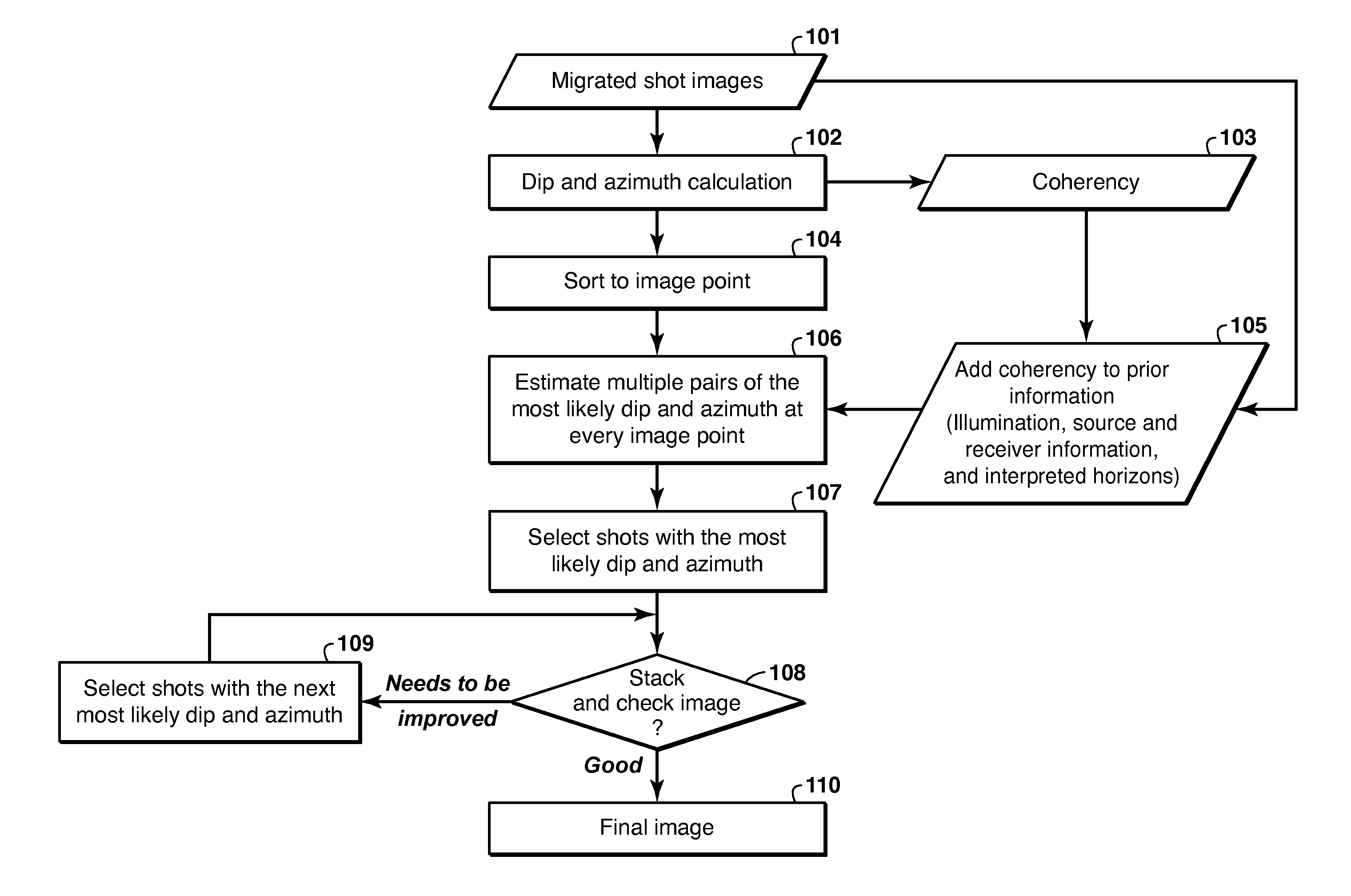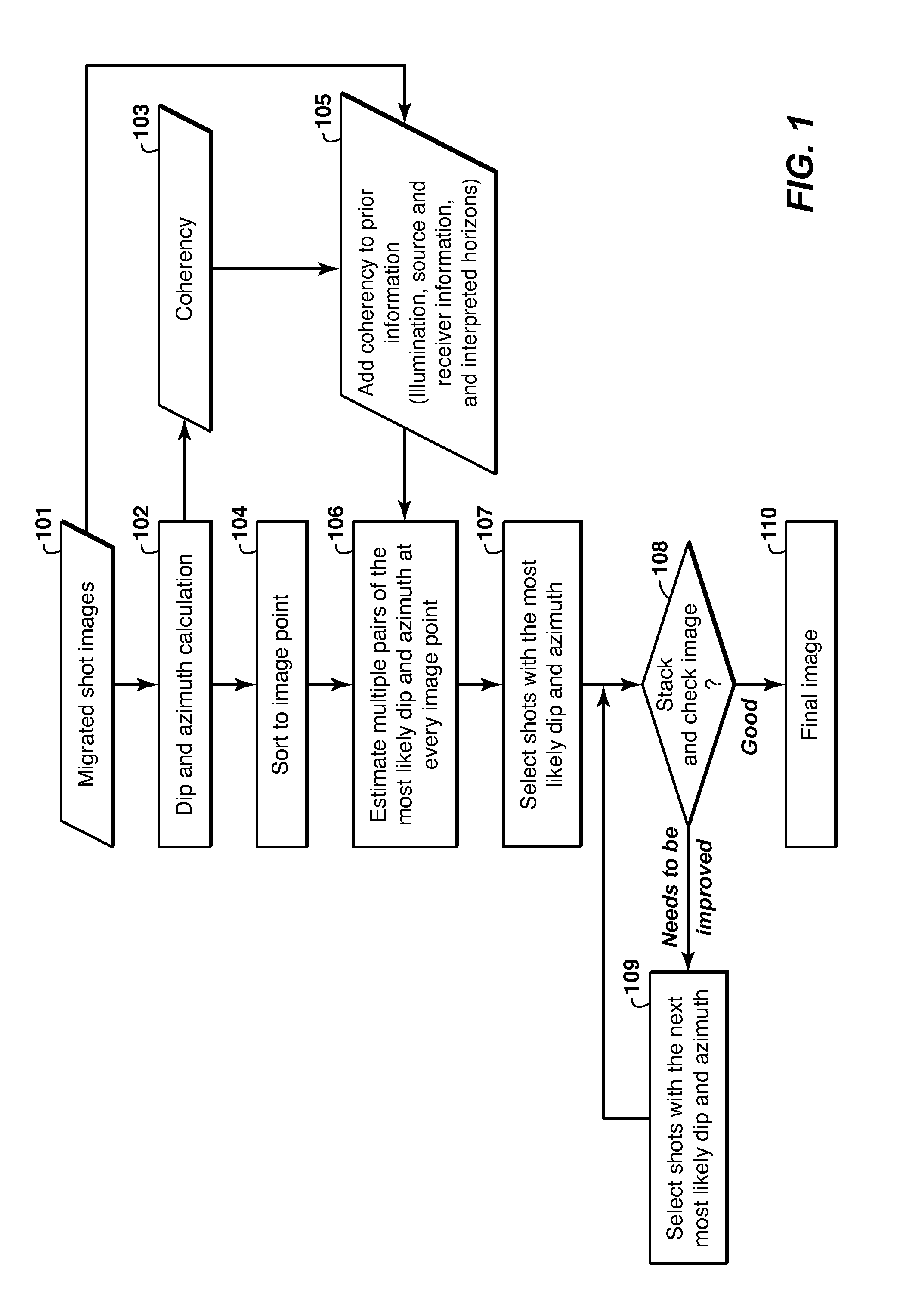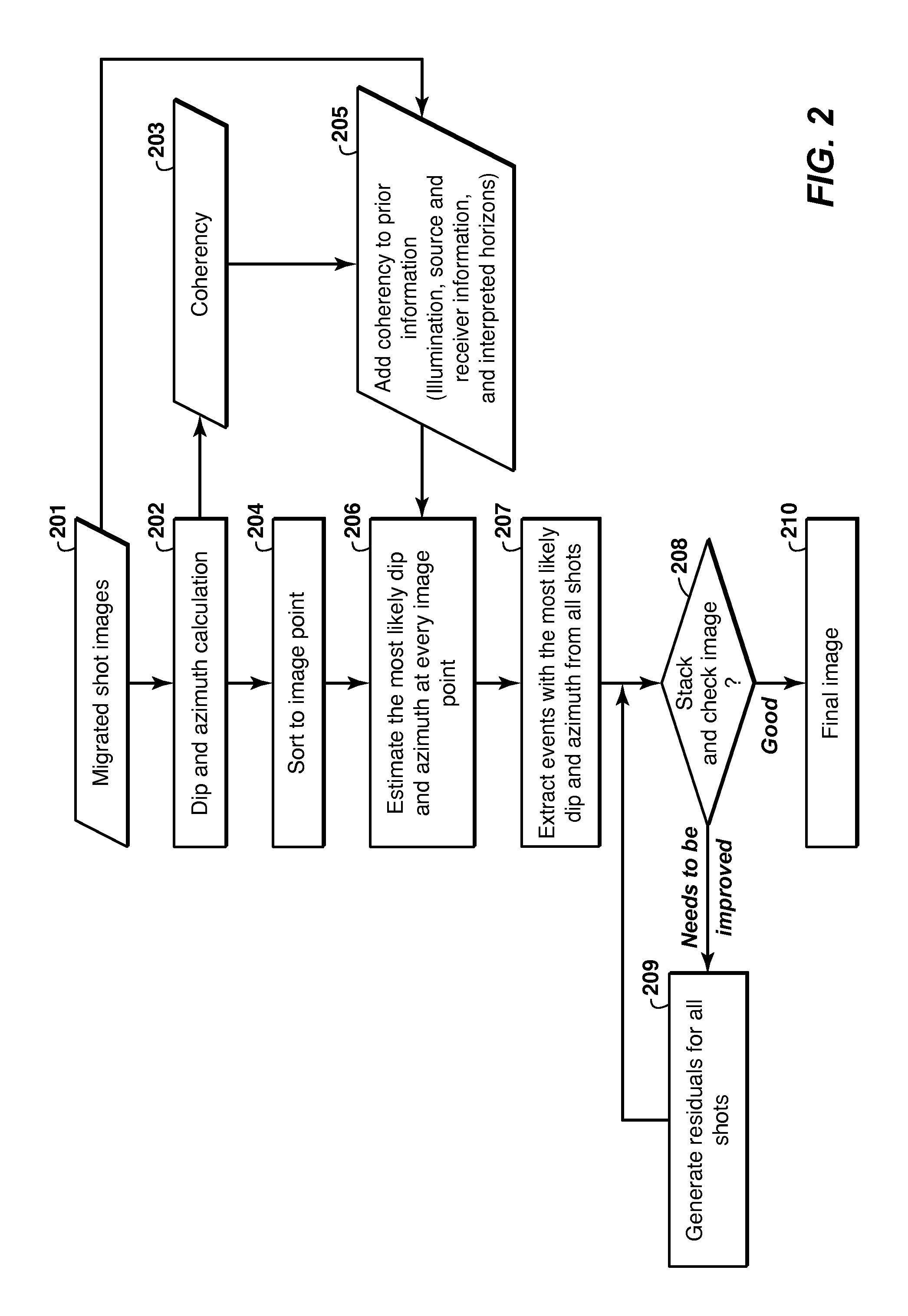Seismic Image Dip Decomposition Estimation and Recomposition
a dip decomposition and seismic image technology, applied in seismicity, instruments, measurement devices, etc., can solve the problems of migration artifacts such as migration swing or smile, insufficient stacking of shot images, and difficulty in applying popular post-processing methods such as muting and residual move-out, to wave equation based migrations such as one-way wave equation migration and reverse time migration. , to achieve the effect of enhancing signals and removing nois
- Summary
- Abstract
- Description
- Claims
- Application Information
AI Technical Summary
Benefits of technology
Problems solved by technology
Method used
Image
Examples
examples
[0033]The embodiment of FIG. 1 was tested on a two-dimensional example. FIG. 3 shows a P-wave velocity model for synthetic data generation and reverse time migration. P-wave velocity increases with depth in sediment layers and 301 is a salt body of high velocity. In the sediment layer, lateral variation is very mild. FIG. 4 is a reverse time migration image (a conventional stacked image) for the model shown in FIG. 3, where no post-processing was applied before stacking. 401, 402 and 403 indicate unwanted noises generated by reverse time migration because of two major reasons in this synthetic example: variable or uneven illumination of acquisition geometry, and acoustic approximation of the elastic wavefield. The original velocity model shown in FIG. 3 does not have steep dip events in sediment layers in FIG. 4 indicated by 401, 402 and 403, which means that 401, 402 and 403 should be treated as noises and removed in a proper way before stacking.
[0034]FIG. 5 shows a result of step ...
PUM
 Login to View More
Login to View More Abstract
Description
Claims
Application Information
 Login to View More
Login to View More - R&D
- Intellectual Property
- Life Sciences
- Materials
- Tech Scout
- Unparalleled Data Quality
- Higher Quality Content
- 60% Fewer Hallucinations
Browse by: Latest US Patents, China's latest patents, Technical Efficacy Thesaurus, Application Domain, Technology Topic, Popular Technical Reports.
© 2025 PatSnap. All rights reserved.Legal|Privacy policy|Modern Slavery Act Transparency Statement|Sitemap|About US| Contact US: help@patsnap.com



